It’s not uncommon for a small plastic injection molded part to be expected to hold up under a large load. One of the ways to strengthen a part is by adding one or more “ribs” to the design. Ribs are thin protrusions that extend perpendicular from a wall or plane to provide added stiffness and strength.
Designers commonly try to increase the strength of a part by making its walls thicker. Unfortunately, walls that are too thick are subject to warpage, sinking, and other defects. The advantage of using ribs is that they increase the strength of a part without increasing the thickness of its walls. Because less material is required, ribs can be a much more cost-effective solution as well.
Designing with Ribs in Mind
The position and orientation of a rib relative to load and reaction forces is critical to its effectiveness. By being conscious of part geometry, designers can ensure that ribs added to the design will improve bending stiffness. Here are some rules of thumb to keep in mind during the design process:
Rib thickness
Ribs should be designed to be 50-60 percent of the nominal wall thickness. Thinner does not provide much structure and may be hard to fill. Thicker ribs are tempting, but they can begin to introduce sinks on the cosmetic surface.
Rib height
For maximum effectiveness, rib height should be no more than three times the nominal wall thickness. Since the rib will be thinner than the wall, it may be hard to fill it if it is taller.
Rib spacing
Increase the number of ribs rather than their height in order to increase stiffness. Ribs should be spaced a minimum of two times the nominal wall thickness apart from one another.
Rib draft
A minimum 1 degree draft will ensure that they release from the tool during molding.
Rib coring
Core thick ribs from the back or below to create a blank area and thinner rib walls. This will help mitigate cosmetic sinks.
Rib radii
Radii at feature intersections should be a minimum of 0.5 - 1.0x nominal wall thickness to increase rib strength.
As with all aspects of part design, you have to weigh the trade offs. How much strength does the part need? What is the cost per part based on different designs that incorporate varying wall thicknesses and numbers of ribs? And how does that align with your budget? But the bottom line is, when used properly, ribs are a design feature that can provide significant benefits.
Insights on the Right Way to Use Ribs
At AIM Processing, we’ve got decades of experience creating small plastic parts through plastic injection molding, and using ribs to produce parts that strike the perfect strength/cost balance. If you’re designing a part and considering the addition of ribs, we’re happy to share our insights. Don’t hesitate to contact us if you have questions.

 SINCE 1993 MADE IN USA
SINCE 1993 MADE IN USA 



